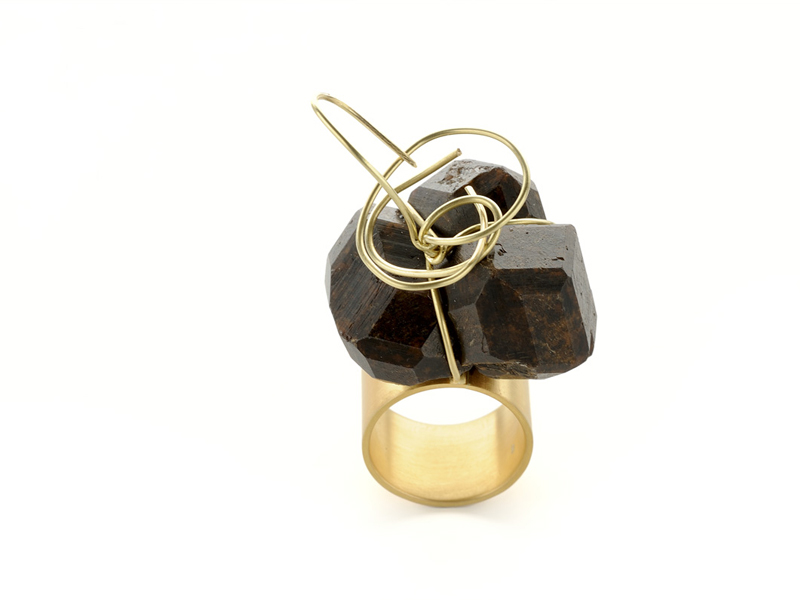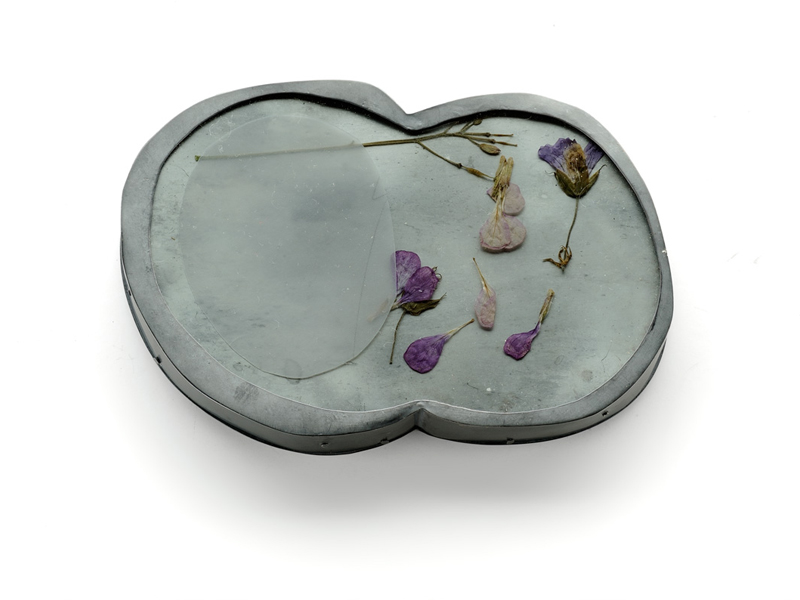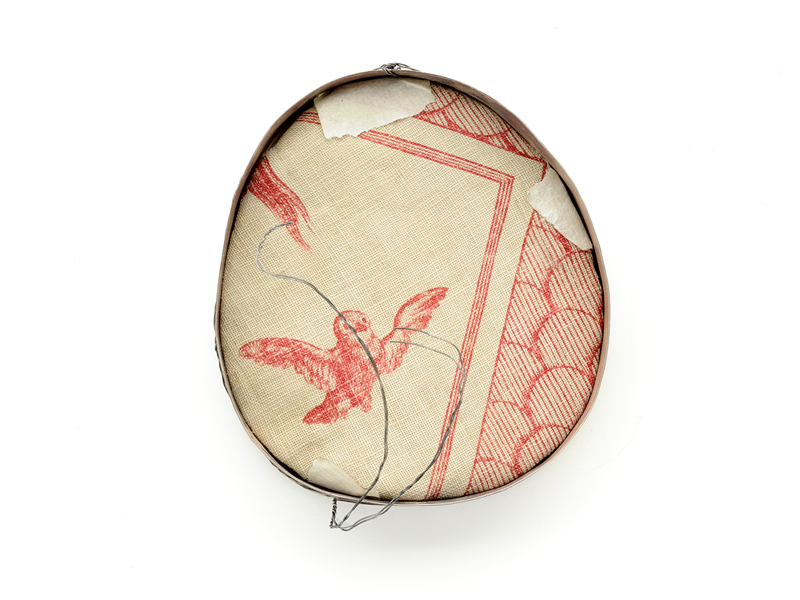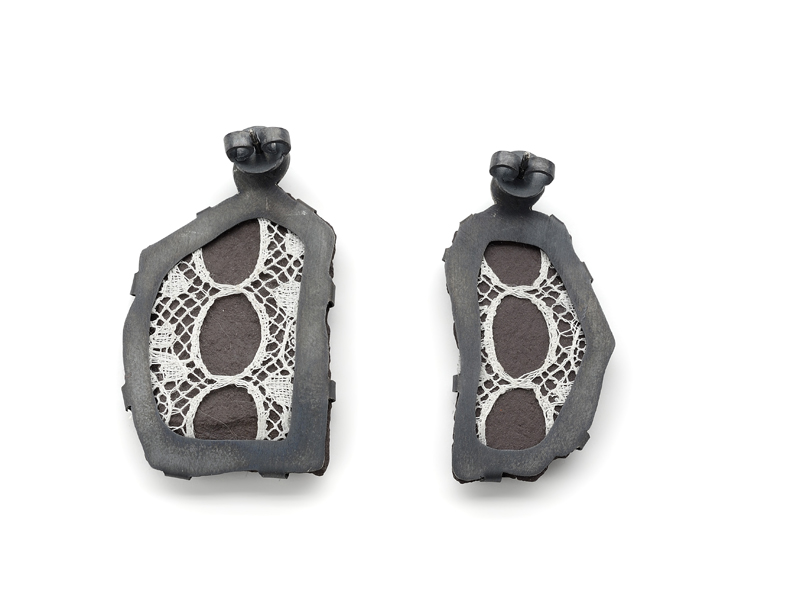Isabel Dammermann: Treasuries & Transience
OHMYBLUE recently presented Isabel Dammermann’s first solo show. Since graduating from Alchimia in Italy in 2008, Isabel, who hails from Hanover, Germany, has established herself as an international artist with a love of materials and a clear aesthetic voice. Sandra Wilson caught up with her to discuss her practice and being involved with solo and group shows.
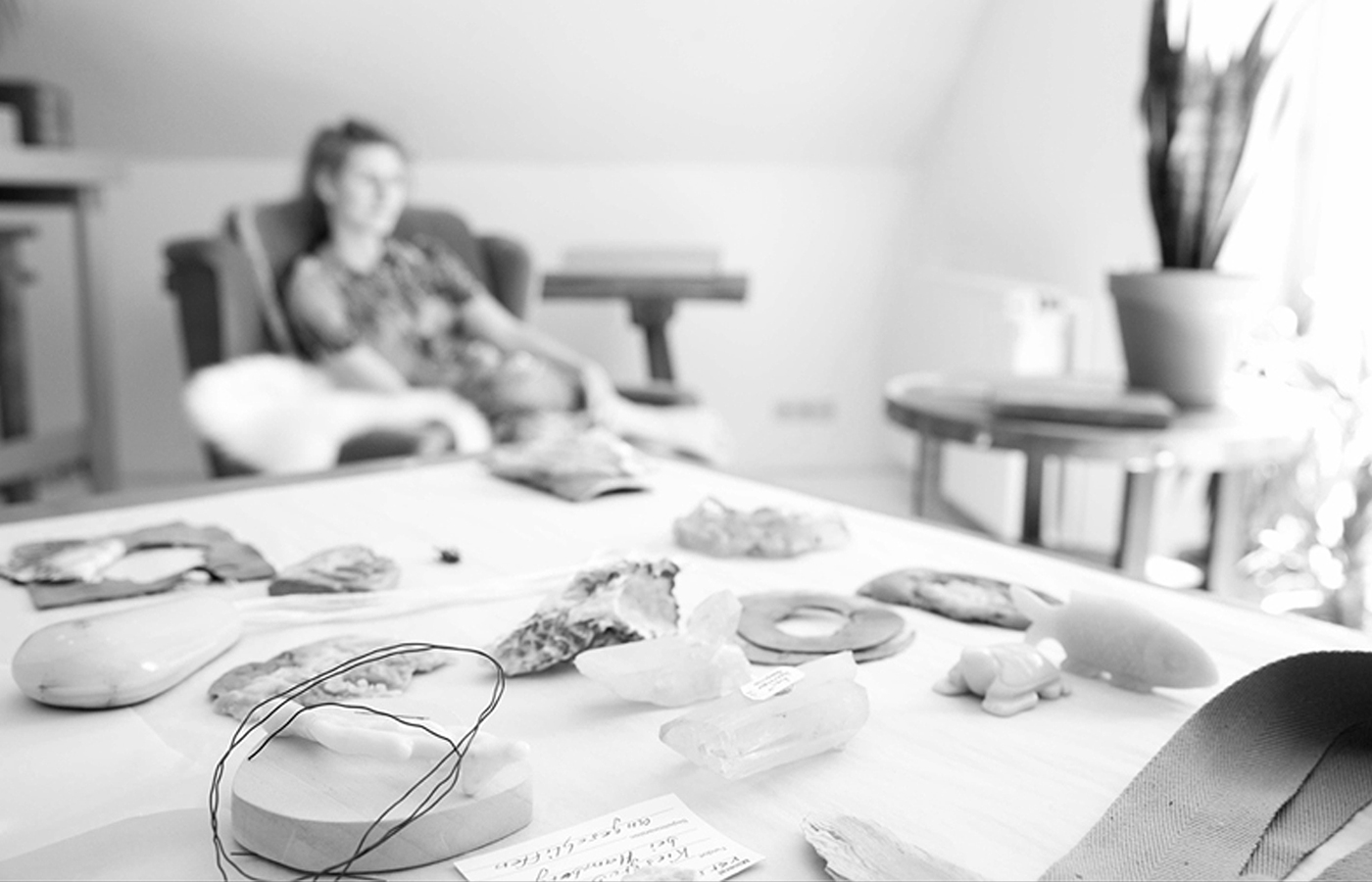
Sandra Wilson: What’s it like to have your first solo show, how long did it take for you to put it together, and how does it feel to have your work under a brighter spotlight?
Isabel Dammermann: It’s fantastic and somehow unbelievable for me. For the last three years, I have hardly had a chance to work as I gave birth to my daughter, Ava. In some ways I was a little naive, because I thought, “When my daughter is born, she will sleep in my workshop while I am making jewelry.” That, I can tell you, didn’t work out, not even for one day!
I always thought that I could handle both together, but I have had to accept that I couldn’t, because my daughter absolutely didn’t wanted to play this game and my health was in bad condition after a complicated birth.
Of course, my daughter is the most wonderful little human in the world for me, but I felt kind of lost in that new role, being around other mothers, talking about baby stuff. I missed my work, I missed losing myself, dreaming, in my quiet and cozy workshop, just surrounded by my materials, music, books, and a good cup of tea. Becoming a mother was like somebody grabbed my shoulders, shaking me: Wake up, you have to grow up, NOW! So I have accepted this challenge.
Around the same time, we bought a house in the countryside that needed renovating. After this challenging period you have to find yourself again, you have to organize yourself in a totally new way.
I am so so thankful to Elena and Chiaralice from OHMYBLUE for giving me the opportunity to show all the work that I have made over the past seven years together in one exhibition. After being separated from the jewelry world, it’s good to know that there are still people who believe in your work.

What impact do you feel being a woman is having on your career and your future aspirations?
Isabel Dammermann: My generation was all about the equality of boys and girls and equal rights. Of course that’s great, but when you are a woman, become pregnant, and ultimately give birth, this praised equality shifts and the roles of women and men don’t feel so equal anymore after all—especially when it comes to making a career in the professional world for yourself. Once you decide to start a family, you, as a woman, will often be the primary caregiver for the child, and for the first time your work as an artist will come second.
Every single one of our teachers told us that once you decide to start a family your career will be over, which were really harsh words back then and made me quite angry. I asked myself, how can someone express those thoughts in front of some young but highly motivated women? It seemed like a rather disrespectful comment to all mothers out there in the world who are balancing motherhood and their careers so well.
Of course becoming a young mother was overwhelming and had an effect on the amount of work I was able to do, but it became an even bigger challenge to demonstrate that I can do both. The experiences I have will be incorporated in my work as they were in the past.
At this point I’m torn between motherhood and my career, as both are such important things in my life, and I’m always striving to find the balance. I have the conflict of wanting more children but also wanting to spend more time working, but I’m sure I will find the balance that makes me happy and fulfills me. Seeing my little one growing up and being more independent also makes me realize that things are getting easier and that ultimately I will have more time to work.
Maybe I have missed some chances in my career, but I would have never wanted to miss out on anything I have experienced in the past few years
This current collection—Treasuries & Transience—explores certain details—often in everyday objects. What were you curious about exploring in these works?
Isabel Dammermann: Let me think how I can explain my way of working.
I never sit down and think, “I want to show this or that with my pieces by using a special material.” I work very intuitively. I am always collecting materials or found objects that cross my path. Everyday things are so interesting to me, because that’s what I am surrounded by day to day. My life is not separated between working time and free time. It accompanies me. While I am bringing the little one to kindergarten, I may stumble over a stone that has a special aesthetic to me. So I pick it up, take it home, and there will come a time when I will use it in a piece. Maybe even a few years later.
When I started studying at Alchimia, I didn’t have any idea about art or jewelry. The focus in the course was very strongly on your own emotional experiences. For me, it opened a window into myself and I started a kind of process of self-discovery, I lost my mother to cancer when I was five years old. For the first time, I started to look at this event and the big influence it had on my life and the questions of who I am. This was a very emotional experience for me.
So actually in that period I didn’t really know what I was doing. I couldn’t really explain my work and what I wanted to say with it. Understanding it for myself was part of a longer process.

Materials are very important to you. Are you more drawn to materials that you have an existing emotional connection with, or those that are alien and unfamiliar to you?
Isabel Dammermann: I am quite open to all materials. But I can see in the materials that I collect that there is a special aesthetic that attracts me. I have a special love for materials that I find in nature, for example while I go tracking with my dog or while I am at the seaside. One of the most wonderful places for me in the world is an island in Greece called Euboea (or Evia). I have some pieces that are directly linked to this spot, such as Evia or Limni. My grandparents lived there for 18 years. My siblings and I used to go there on every holiday. This was always, and still is, a healing place for me. Every year I collect materials from there. I also love to go to vintage stores or flea markets, where I have found a lot of the old fabrics that I used for some pieces. I just love things that have some history behind them.
But I am also open to trying out other materials like resin or modeling paste. In that case, I really can say that I was trying to get a special effect.
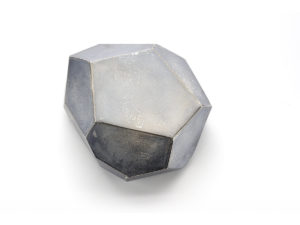
Aesthetics are also important to you. Do you think there is such a thing as a universal aesthetic system, or do we each create our own?
Isabel Dammermann: For me there are many aesthetic systems. Fortunately, otherwise it would be very boring. There is a lot of work in the world that I am absolutely not attracted to, in an aesthetic way. But I can still recognize its qualities, and that it is very good work, even if I would never take it home.
You’ve previously described your process as tapping into the unconscious. Tell us more about this.
Isabel Dammermann: Something that influenced me a lot was when I started to read books about the history of philosophy. Everybody is searching for a way to have a happy life. Nowadays, it’s all about being happy. Of course I am also searching for that, but in my case I can say that I am quite balanced with the two sides of life. From time to time I am melancholic, there is always that feeling of emptiness, that comes from my childhood experiences. To lose your mother at that age is the worst-case scenario. The consequence is that emptiness you feel. It’s part of me, but it totally gives me the power to work. To create out of these emotions pieces that are my understanding of beauty is one of the most wonderful things to me. And to see that I bring joy to people. What else could I want? So the pieces that I am doing are always based on my emotional condition, and for me that is somehow unconscious, because emotions aren’t rational. They come when they come and even though you know better, you are captured by them.
To be creative is always a big up and down. There are these periods where I am totally blocked. I am sitting in my workshop finding a thousand excuses so I don’t find the time to work, because I am totally overstressed about how to go on. But when I get over this point, it’s wonderful and then it’s just floating. While I am working then, I am in this special mood, I am just working, not thinking too much. Afterward, I need a healthy distance from my pieces. After a while I see, I understand what I was doing in that moment and why I was doing it.
When we were having critiques about our work at Alchimia, it was hard for me. Because I never could explain what I was doing. I can tell you, it always ended up with me crying. But it was a great time and I learned so much about myself.
What attracted you to this particular school?
Isabel Dammermann: First I wanted to do a normal education as a goldsmith, but I couldn’t find a place back home. So I was looking around on the Internet for alternative solutions. During that time, my twin sister was studying in Australia. I never wanted to leave my hometown, because my boyfriend (now husband) was studying there. But I found that school, and I was totally interested in it. I had never heard before about this other way of doing jewelry. I was very unaware at that point. I thought, ok, I will go there for one year. I can manage this with my boyfriend, it would be great to do this experience like my sister did, being away from home. In the end, I stayed three years in Florence, because I fell in love with the contemporary jewelry world, the school, and Florence.
Last year, at Schmuck, you organized a tribute to one of your teachers, Manfred Bischoff. What did he mean to you, and what was it about his approach as an artist that inspired you?
Isabel Dammermann: My class was the last class that Manfred taught at Alchimia. While he was teaching us, he got ill, and the collaboration with the school ended. Actually, I wanted to do the fourth year, the quaternitas program at Alchemia, together with Manfred, but it was not possible anymore through the school. But Manfred and I decided to do it privately. So I went to visit him many times between 2010 and 2014 to talk about my work. I used to call him always on Sundays and we would just talk about God and the world.
So in the period where I was kind of cut off from the world of jewelry because of having a baby, Manfred was the only person that I was connected with who had anything to do with jewelry. He always encouraged me to keep on working. For me, his death has been an indescribable loss. He made our wedding rings, so I have him with me every day, and I am thankful that he had a chance to meet our daughter.

How did you find organizing and curating an exhibition/group show like that? What did you find challenging, and what came easy to you? How has preparing your own solo exhibition been different?
Isabel Dammermann: When I read or hear something about Manfred, it’s always about him as an artist and his work. Of course he is one of the greatest jewelry artists, but what I wanted to show with the exhibition I organized for him was his work as a teacher. That had been so important for him. He loved to work with students from all over the world. And he was an incredible teacher. I think he made a big, big impression on all the students that he taught. So I was overwhelmed when I got such good feedback from students who wanted to take part in that exhibition. Forty-two students from 22 different countries!
The biggest challenge was that this idea had come really spontaneously: I started to contact the students in October, and the exhibition would start in February around Schmuck. So first of all I had to find all the contacts. I was afraid that I might forget somebody. I had never done something like that before. And I only had three days (and nights) a week to work. So in that short period, I had to find an exhibition space, reflect about the concept, write emails to 42 students, create the flyers and posters, work on my own piece, and think of how to set up the exhibition. At the same time, I had to do all the housekeeping, and our puppy moved in after Christmas time.
So, yes, I think it was very challenging for me, but my husband and sister helped me a lot. And even if it was kind of stressful, it gave me such good energy to have the pressure to make this exhibition happen and to make it in a really good way, because Manfred deserved it. In the end, it also became a kind of reunion, because I reconnected with so many girls I had studied with at Alchemia. I hadn’t seen them in many years. So Manfred brought us all together. That was one of the most wonderful things.
At the exhibition I met Elena and Chiaralice Rizzi, from OHMYBLUE, for the first time. It was really nice to meet them, since we had been in contact over and over again during the last few years because we always wanted to do a collaboration. But we had never made any concrete plans. So this encounter was the start of that fantastic offer of doing a solo show in their gallery.
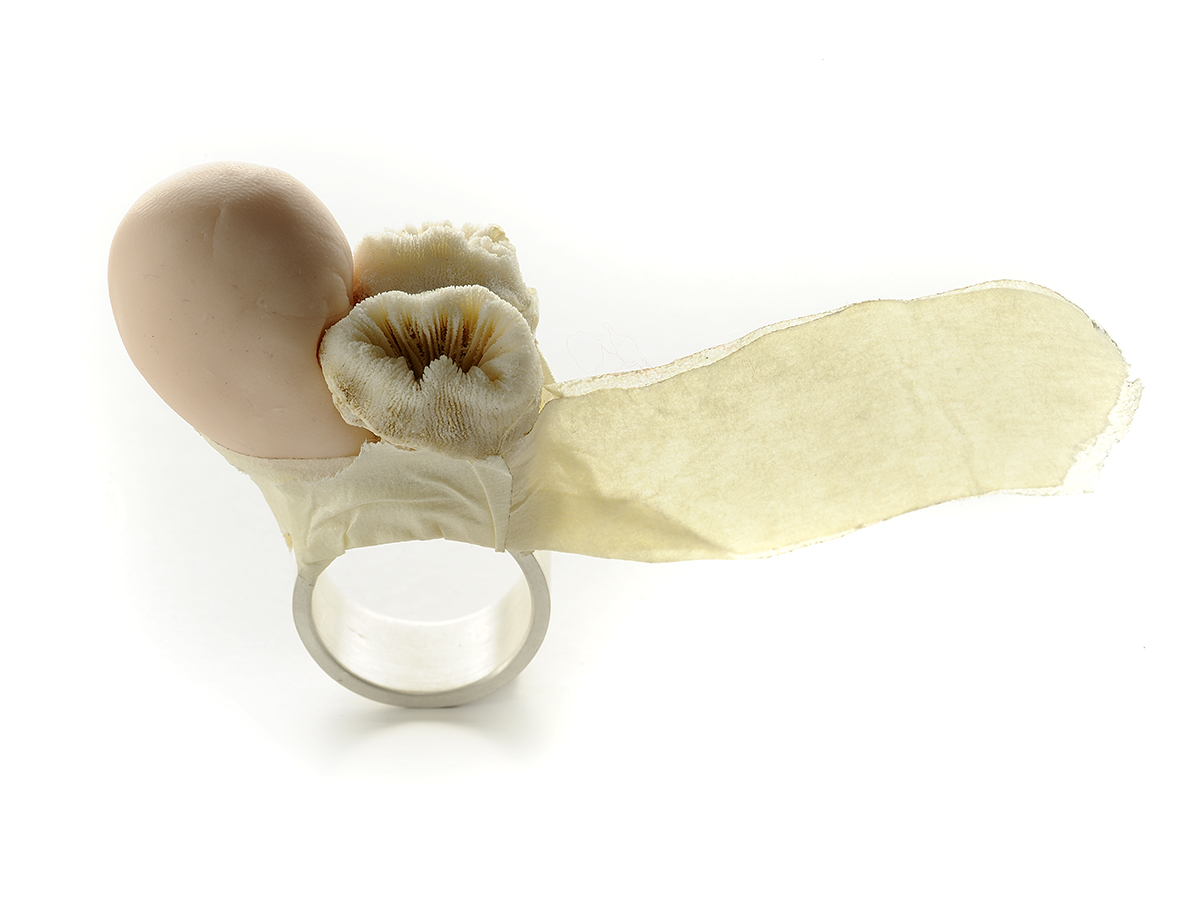
Would you be interested in curating more group shows? If so, which kind?
Isabel Dammermann: I loved organizing this exhibition, because it was such a personal matter. I also loved being in contact, day in, day out, with so many wonderful people who are making jewelry. And it was a great start to come back to work after giving birth. But, for now, I want to concentrate on my own work. I have so many new pieces laying in my workshop and I must finish them all! And, of course, since becoming a mother, the time I can devote to my practice is reduced.
In order to make a living from your contemporary jewelry, do you supplement your practice with teaching, workshops, or short courses or something else?
Isabel Dammermann: I am open to everything and I also have had requests for that in the past. But as I am living in the countryside and the last year has been so full of changes, it is not an option for now. But maybe it will be an option in the future. I would love to think in that direction.
Do you have a favorite book that you return to time and time again?
Isabel Dammermann: I am crazy about books. But I have three favorite books in my workshop that have a unique place. One is the book Neues Museum Berlin. I just love the way the architect David Chipperfield has repaired, conserved, restored, and re-created all of its components.
The second book is a catalog of an exhibition where the works of Turner, Monet, and Twombly were shown together.
And the third book is a catalog of the work of the Belgian painter Paul Delvaux.
Who would you most like to collaborate with in the future?
Isabel Dammermann: For now, I am curious about how the exhibition in Venice will be. I am somebody who believes in destiny. So I am sure I will meet somebody at the right time, in the right place. And if not, I would like to contact some galleries. Maybe I will find another one that is also interested in showing my work.
10/22/2016
